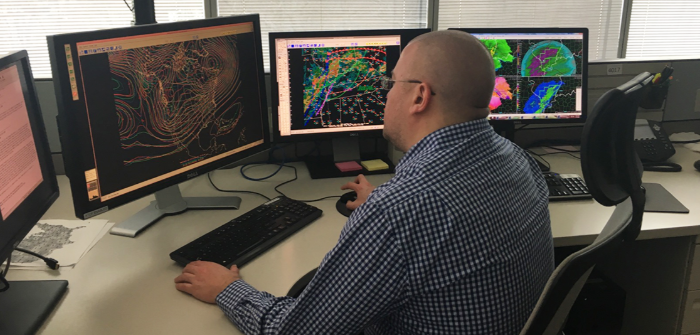The National Oceanic and Atmospheric Administration (NOAA) in the United States has awarded $3.1 million in grants to 21 small businesses to support the development of innovative technology, including some weather prediction projects.
In December 2019, NOAA’s Small Business Innovation Research Program issued a call for applications for Phase I funding in topic areas including weather service improvement and evolution and next-generation observation and modeling systems, as well as next-generation NOAA observing platforms, aquaculture, and recreational and commercial fisheries.
Each successful Phase I awardee receives up to US$150,000 to establish the merit, feasibility and commercial potential of the proposed research and development over a six-month period. After completing their Phase I projects, awardees may compete for Phase II funding of up to US$500,000 for two years to continue developing the technology. In Phase III, awardees may seek additional funds from outside the NOAA SBIR Program to help turn the new technology into a commercial product.
The recipients of the grant for weather service and improvement include:
- DIVEVIZ, San Diego, US$149,987, to develop a forecasting model for ocean visibility using crowdsourced data;
- CFD Research Corporation, Huntsville, Alabama, US$149,999, for a school system kit to provide weather risk information and impacts;
- Michigan Aerospace Corporation, Ann Arbor, Michigan, US$149,978, to create a web-based portal called NOAA Open World that simplifies access to NOAA data for education, outreach and decision-makers; and
- Betterdex Inc., Birmingham, Alabama, US$149,366, to create a novel system for cloud type identification.
The project also extends to the following developers of next-generation observation and modeling systems:
- Kraenion Labs, Los Gatos, California, US$149,996, for machine learning for risk assessment using satellite and aerial imagery;
- Aerodyne Research, Inc., Billerica, Massachusetts, US$150,000, for automated monitoring of volatile organic chemicals with a compact gas chromatography-proton transfer reaction mass spectrometer;
- INNOVIM, Greenbelt, Maryland, US$91,520, for a new machine-learning technique for accurately forecasting precipitation from landfalling atmospheric rivers; and
- Azavea Inc., Philadelphia, US$150,000, for a system to create accurate flood inundation maps using machine learning and synthetic aperture radar (SAR) data.
“As NOAA continues to strengthen its commitment to protecting life and property, we are increasingly reliant on the expertise and agility of the private sector,” said Neil Jacobs, PhD, acting NOAA administrator. “Through collaboration with these small businesses, Americans will benefit with increased forecast accuracy and better management of our natural resources.”
“We are excited about this year’s awardees, many who are harnessing the power of unmanned systems, artificial intelligence, genomics, machine-learning and public engagement to develop products and services that support NOAA’s mission and may also have great potential as commercial products,” said Kelly Wright, director of the NOAA Technology Partnerships Office.



